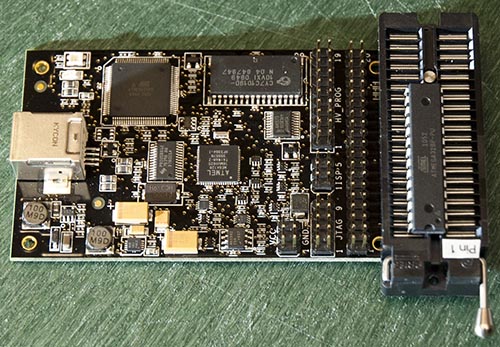


Sure, in the short term, it isn’t that much of a difference in cost, but the cheaper I can make my own chips, the more neat little toys I can make :P. The main reason I ask is because an ATmega4 is only $1.77, ATmega8 is only $2.30 where as the 328 is $3.42 (all surface mount, all not pre-programmed, from mouser).
#Atmel dragon schematic pdf#
Here are two sources for the MCS BASIC manual two clean PDF versions here and here. So… O-o I guess what I’m asking, is the ATmega4/8 compatible with arduino? The resulting schematic contains the 8052, an 8Kx8 EEPROM (AT28C64), a 32kx8 RAM (IDT71256), a 74HC373 latch and a PLD (GAL20V8D). I don’t think the application of turning on and off leds is very ram intensive, so the extra 1kb ram from the 8 isn’t really needed (script doesn’t use many variables either). MPLAB does not support the Dragon programmer, so I used Atmel Studio with thre Dragon ISP interface, and I was able to program the target successfully with the HEX file generated by MPLAB, and it ran as expected. I was just wondering is there any reason an ATmega4/8 can’t run arduino? The main reason I ask is, because I’m not too worried about 8kb of space on the ATmega8 being to small (most programs that I’d be writing to it would be at most 100 lines) compared to the 328’ 32kb (… I now get the naming convention of the 328… XD), I am kind of worried about the 4kb of the Atmega4, with the bootloader on it. I just recently built a simple Atmel AtMega328P project using Microchip MPLABX 5.35 and XC8 2.1. I also found online that the ATmega4 and ATmega8 performs the same as a 328 as far as speed, power consumption, etc. So, as I’ve stated in a different post, I’m working with making an arduino system that’s practically an led control kit. AVR-HV allows programming, reading, verifying and configuring AVR microcontrollers with its high voltage programming interface and it connected to PC using USB interface.


 0 kommentar(er)
0 kommentar(er)
